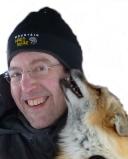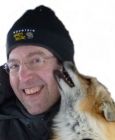Environment
Power in the Wild: It’s Orwellian Out There in Nature
The ways that animals seek power are subtle, complex, and mind-boggling.
Posted April 20, 2022 Reviewed by Lybi Ma
Key points
- The quest for power in animals can involve overt aggression, but often is far more subtle, involving nuanced, strategic behavior.
- Power dynamics in animals include spying, deception, manipulation, forming alliances, and building social networks.
- Researchers are working hard to build a truly integrative explanation for the complex dynamics of power in nonhumans.
“The Party seeks power entirely for its own sake. We are not interested in the good of others; we are interested solely in power…We know that no one ever seizes power with the intention of relinquishing it. Power is not a means, it is an end…. the object of power is power.”—George Orwell, Nineteen Eighty-Four
When it comes to power and animals in nature, Orwell’s Party got it partly right. Animals don’t relinquish power once they get it. In nature, power is a means to food, mates, shelter, and virtually every other resource.
The quest to attain and maintain power lies at the heart of almost all animal societies. The subtle, and sometimes not so subtle, ways that animals seek power over those around them are astonishing and informative, both in and of itself, and for providing an evolutionary window through which we can better understand behavioral dynamics in group-living species. The quest for power sometimes involves overt aggression, but many times it entails the use of more nuanced strategic behaviors: complex assessments of potential opponents, spying, deception, manipulation, forming alliances, and building social networks to name just a few. And even when it does involve straight-up fighting, it plays out more like an opera than a knock-down, drag-out, fight.
In Power in the Wild, I take readers around the world, peering in on power dynamics in dozens of species, including hyenas, meerkats, mongooses, caribou, chimpanzees, bonobos, macaques, baboons, dolphins, deer, horses and field mice, as well as ravens, skylarks, white-fronted bee-eaters, common loons, Florida scrub-jays, copperhead snakes, wasps, ants, and cuttlefish, as we travel with researchers to the bays and the forests of the Democratic Republic of the Congo and Panama, the streets of Kolkata and Southern California, the meadows of Southern France, the cliff faces of Kenya and more, all to understand the hows and whys of power in nonhuman animal societies.
To provide a sense of just how subtle, complex, and, I would argue, beautiful the hunt for power in animals can be, let’s take a peek at little blue penguins (Eudyptula minor) living on the eastern side of Banks Peninsula in New Zealand. It took a lot of laying in penguin poop to do it, but animal behaviorist Joseph Waas discovered that little blue penguins are also little blue spies scoping out power rivals.
The smallest of all penguins, standing at only about a foot tall, little blue penguins make up for stature with volume. They are loud, really loud. As he lay in the caves where these birds live, “there would be these periods of time,” Waas told me, “when all the calling would die down and then one bird or maybe two birds would then call, and then you would get this incredible contagious effect until everyone started calling.” His early work was in these cave colonies, where penguins nest about two to three meters apart, usually up against the wall of the cave. Because the penguins are nocturnal, Waas needed to be as well.
It was not easy work. “There was a lower cave where you had to get on your belly and crawl,” Waas says, “which wasn’t very pleasant, as the actual base of the cave is made of dried guano and penguin feathers, all sort of smashed (up). Dreadful smelling and not very pleasant to breathe.”
Waas was interested in power dynamics in these tiny penguins. Lying on his stomach he saw birds fighting, interlocking bills, and flipping one another almost like a judo throw. Waas also heard something, “triumph calls” made by males. The triumph call in little blue penguins is a high-pitched inhalation paired with a bray-sounding exhalation repeated over and over. But it wasn’t the auditory dynamics that really struck Waas, it was the context of the call: at the end of an aggressive interaction between penguins, the winner often stood up with its flippers out and, as Waas described, “belted out this (triumph display) vocalization,” while “the loser (went) into a low walk or a low run … away from the winner.” Sometimes it was doubly spectacular: if a female was in the nest of the male who was making a triumph call, she might join in as well.
Waas soon realized he was not the only one impressed by triumph calls—other penguins, not only the male that had just lost to the caller, were clearly spying on the fights of others, paying attention to these shouts of power as well. What these eavesdropping penguins might be doing with the information from the call, though, he didn’t know. He could not—and even if he could, he would not—set up fights between little blue penguins. But he came to think he could use what are called playback experiments, where he could control what was heard, to study power and possible eavesdropping effects. The cave he was working in was just too chaotic to control who would hear what was on playback, and so he moved his work to another colony right near the cave, where penguins lived outside in burrows.
This burrowing colony was in the middle of a farm owned by Waas’s friends, Francis and Shireen Helps. The Helps, Waas says with a smile, “marked all the birds, and so for a lot of birds we knew their age and sex, and they also constructed artificial burrows … that the birds seemed to prefer.” Those artificial burrows were all exactly the same dimensions—and so, all of a sudden, instead of the chaos of the cave, here was a marked colony with birds living in identical homes. A perfect set-up for Waas to run a playback experiment, putting out speakers that allowed him to control who heard what.
Waas and his team worked with 27 males and 16 females who were incubating eggs alone (both males and females incubate eggs) at their artificial burrows. Each egg was gently removed and put into an incubator and an artificial egg that had sensors that recorded the bird’s pulse, and so indirectly its heart rate, was placed in the nest. Next, Waas and his colleagues put a microphone near the nest they were working with that night, so that they could record the vocalizations of a penguin after he or she heard a speaker five meters away broadcast the sounds of a fight, followed by the triumph call made by the winner of the fight or, alternatively, the call made by the loser of a fight. In essence, they provided the intel the penguins could use to spy on others to see, in fact, if they did that.
When a male heard the taped triumph call of a winner his heart rate shot up by more than 30 beats per second compared to typical baseline values. No such burst was found when he heard the sounds of losers. These eavesdroppers were clearly nervous when those in power were nearby. And they acted like it too: They were much more likely to vocalize themselves in response to hearing the sounds of a loser, who is presumably a weaker potential opponent, than a winner. For their part, females were also spying, as they showed increased heart rates when they heard winners and losers, but they never vocalized after hearing playbacks, suggesting they were generally agitated by a fight and wanted no part of it.
Swordtail fish spy on their rivals for power, too. They keep away from individuals who win fights, as well as those who lose fights, but put up a hell of a fight while doing so. Ravens not only spy on each other, but they modify their behaviors differently in power struggles as a function of who is watching them (this is called the audience effect). Dolphins and hyenas form coalitions to cooperate with a select few so they can grab power from others. Mongoose groups get into all-out melees to attain power at the level of the group. And the list goes on. But it’s more than lists that animal behaviorists seek. All around the globe, they continue to peel back the layers and help us better understand the roots of power to build an integrative, conceptually based, explanation for the dynamics of power in nonhumans.
Predicting what that explanation will look like is difficult, but it is a sure bet that it will have certain general characteristics:
- It is bound to be complex because power is complex and multidimensional.
- It will be an evolutionary explanation that involves an even deeper understanding, both at the empirical and theoretical level, of the costs and benefits of power, as they play out in a particular ecological context, over long periods of time.
- It will be informed by new theory, including greater reliance on social network theory to better understand how the effects of power move through groups, and between groups, sometimes in a wave-like fashion.
- It will inform not just our understanding of power per se, but nonhuman behavior in general because all power dynamics are embedded within the social milieu that makes up day-to-day animal life.
- It will be informed by new technological breakthroughs in data collection, some of which are only at the blueprint stage. There will never be a replacement for observing animals in the field to test hypotheses about power. But how that is done is changing at a breakneck pace. GPS tracking allows researchers not just to track animals, but to make inferences about power dynamics, and drones already allow us to study how power unfolds in dolphins and soon in banded mongooses.
How all of this unfolds over the coming years will be fascinating to watch.
References
Lee Alan Dugatkin's newest book is Power in the Wild: The Subtle and Not-So-Subtle Ways Animals Strive for Control over Others (University of Chicago Press, 2022). Dr. Dugatkin is also co-author, along with Lyudmila Trut, of How to Tame a Fox and Build a Dog (University of Chicago Press, 2017), which the New York Times Book Review called “A story that is part science, part Russian fairy tale, and part spy thriller. . . . Sparkling."
Twitter, @Leedugatkin; Facebook, facebook.com/lee.dugatkin/




